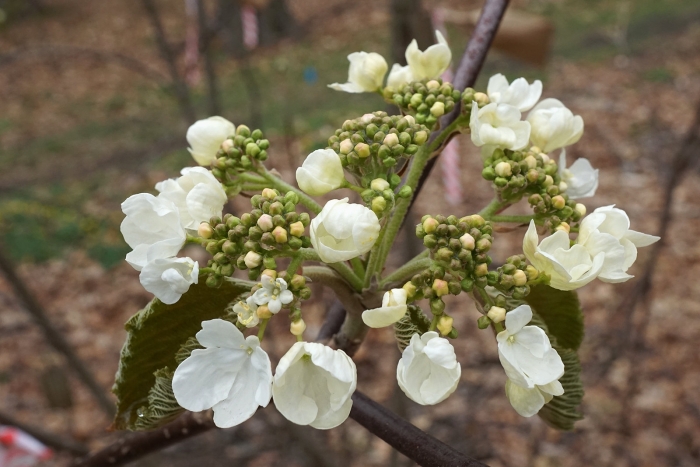Hobblebush
(Viburnum lantanoides)
Hobblebush (Viburnum lantanoides)
/
/

Plant Image Library
CC BY-SA 2.0





















































Estimated Native Range
Summary
Hobblebush is valued for its ornamental qualities, including its attractive flowers and the red to purple fall foliage. It is used in naturalistic plantings, woodland gardens, and as an understory shrub in larger landscapes. It prefers partial to full shade, consistent moisture, and well-drained, acidic soils rich in organic matter. While it is not drought-tolerant, it is relatively low-maintenance once established. Gardeners should be aware that the shrub may require protection from deer browsing. Hobblebush is not known for aggressive roots or serious disease problems, but it can be susceptible to leaf spot and mildew in overly wet conditions. It is not typically invasive when grown outside its native range.CC BY-SA 4.0
Plant Description
- Plant Type: Shrub
- Height: 2-3 feet
- Width: 2-3 feet
- Growth Rate: Slow
- Flower Color: White
- Flowering Season: Spring
- Leaf Retention: Deciduous
Growth Requirements
- Sun: Part Shade
- Water: Medium
- Drainage: Medium, Slow
Common Uses
Bee Garden, Bird Garden, Butterfly Garden, Deer Resistant, Fire Resistant, Fragrant, Hedges, Hummingbird Garden, Rabbit Resistant, Showy Flowers
Natural Habitat
Understory of cool, moist forests in the northeastern United States and southeastern Canada
Other Names
Common Names: Moosewood, Witch-Hobble, American Wayfaring Tree, Alder-Leaved Viburnum, Witch Hobble, Bois D’Orignal, Viorne Bois-D’Orignal, Viorne Faux-Lantana, Viorne À Feuilles D’Aulne, Erlenblättriger Schneeball
Scientific Names: , Viburnum lantanoides, Viburnum alnifolium, Viburnum grandifolium, Viburnum alnifolium f. alnifolium, Viburnum alnifolium f. roseum, Viburnum lantana var. grandifolium,
GBIF Accepted Name: Viburnum lantanoides Michx.